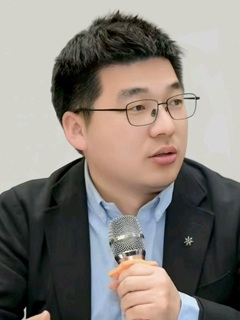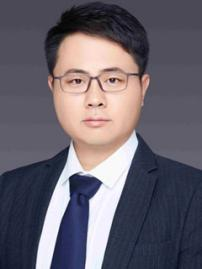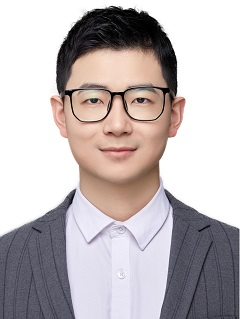Concrete Frontiers: From Material Complexity to Intelligent Structural Applications
Time
3:00 PM, October 16, 2025 (Beijing)Contact Us
Email: jbdejournal@sciexplor.comSpeakers

Prof. Zhenhua Duan
College of Civil Engineering, Tongji University, Shanghai, China.
Topic: Complex Characteristics of Multi-Source Recycled Aggregate and Intelligent Prediction of Recycled Concrete Performance
Prof. Zhenhua Duan received his Ph.D. and completed postdoctoral research at The Hong Kong Polytechnic University. He is currently an Associate Professor and Ph.D. supervisor at the College of Civil Engineering, Tongji University, and serves as the Deputy Director of the Research Section on Recycled Concrete Structures and Construction. He has been selected for the Shanghai “Pujiang Talent Program” and the “World’s Top 2% Scientists” list.
He is the Chair of the Organics–Inorganics Composite Solid Waste Recycling Committee of the Chinese Ceramic Society, a Board Member of both the Concrete and Prestressed Concrete Branch and the Green Construction and Operation Branch of the China Civil Engineering Society, and the Secretary-General of the Academic Committee on Recycled Concrete of the China Civil Engineering Society as well as the Secretary-General of the Recycled Concrete Technical Committee of the Asian Concrete Federation.
His research focuses on fundamental scientific issues of recycled concrete materials, with particular emphasis on recycled concrete rheology, 3D printing concrete, and solid waste recycling. He has presided over more than 20 research projects, including two funded by the National Natural Science Foundation of China, one sub-project of the National Key R&D Program, and four provincial and ministerial-level projects. He has published over 100 SCI/EI journal papers, with an H-index of 41 and more than 7,000 citations in the Scopus database. He holds 23 authorized invention patents and has contributed to the compilation of more than 10 national, industrial, and local standards. As a key contributor, he has received seven provincial and ministerial-level awards, including three First Prizes and four Second Prizes.
He is the Chair of the Organics–Inorganics Composite Solid Waste Recycling Committee of the Chinese Ceramic Society, a Board Member of both the Concrete and Prestressed Concrete Branch and the Green Construction and Operation Branch of the China Civil Engineering Society, and the Secretary-General of the Academic Committee on Recycled Concrete of the China Civil Engineering Society as well as the Secretary-General of the Recycled Concrete Technical Committee of the Asian Concrete Federation.
His research focuses on fundamental scientific issues of recycled concrete materials, with particular emphasis on recycled concrete rheology, 3D printing concrete, and solid waste recycling. He has presided over more than 20 research projects, including two funded by the National Natural Science Foundation of China, one sub-project of the National Key R&D Program, and four provincial and ministerial-level projects. He has published over 100 SCI/EI journal papers, with an H-index of 41 and more than 7,000 citations in the Scopus database. He holds 23 authorized invention patents and has contributed to the compilation of more than 10 national, industrial, and local standards. As a key contributor, he has received seven provincial and ministerial-level awards, including three First Prizes and four Second Prizes.
Introduction
Due to the diverse sources of waste concrete, the processed recycled aggregates are generally attached with a layer of porous mortar that exhibits spatiotemporal distribution uncertainties. This makes the quality of recycled aggregates difficult to quantify, resulting in large fluctuations in recycled concrete composition, unclear evolutionary patterns, and unpredictable performance. Therefore, analyzing the complex quality characteristics of multi-source recycled aggregates and the intelligent prediction of recycled concrete performance is a primary scientific issue for clarifying the recycling of waste concrete.
This presentation focuses on multi-source recycled aggregates, examining the mechanisms for quantifying their quality and their influence on recycled concrete performance. Based on this analysis, intelligent prediction methods for multi-source recycled concrete are proposed, employing various machine learning models.
Due to the diverse sources of waste concrete, the processed recycled aggregates are generally attached with a layer of porous mortar that exhibits spatiotemporal distribution uncertainties. This makes the quality of recycled aggregates difficult to quantify, resulting in large fluctuations in recycled concrete composition, unclear evolutionary patterns, and unpredictable performance. Therefore, analyzing the complex quality characteristics of multi-source recycled aggregates and the intelligent prediction of recycled concrete performance is a primary scientific issue for clarifying the recycling of waste concrete.
This presentation focuses on multi-source recycled aggregates, examining the mechanisms for quantifying their quality and their influence on recycled concrete performance. Based on this analysis, intelligent prediction methods for multi-source recycled concrete are proposed, employing various machine learning models.

Prof. Chao Liu
School of Civil Engineering, Xi'an University of Architecture and Technology, Xi'an, Shaanxi, China.
Topic: 3D Printed Recycled Concrete Walls: From Interlayer Shear Performance to Seismic Performance
Professor Chao Liu, PhD, is a doctoral supervisor and the Deputy Director of the Human Resources Department at Xi’an University of Architecture and Technology. He also serves as the Director of the Shaanxi Future Industry Innovation Research Institute of Intelligent Construction. He was selected for the High-level Talent Science and Technology Leadership Program by the Organization Department of the Shaanxi Provincial Committee, is a recipient of the Shaanxi Distinguished Young Scientist Fund, and has been awarded the Shaanxi Province Science and Technology Rising Star title. He has led 19 major projects, including the “13th Five-Year” National Key R&D Program, the National Natural Science Foundation of China, and large-scale provincial innovation projects. Professor Liu has received four first-class and two second-class provincial and ministerial science and technology awards, as well as one first-class scientific and technological award in higher education in Shaanxi. He has published 139 papers as first or corresponding author in internationally and domestically recognized academic journals.
Introduction
This presentation provides a systematic overview of our group’s full-chain research on 3D-printed concrete structures, covering material properties, structural behavior, and construction methodologies. The study examines the coupled compressive–shear response of 3D-printed concrete elements, the seismic performance of core-wall composite structures fabricated via 3D printing, and the development of cluster-based construction strategies. Key findings include the evolution of porosity during the printing process and its influence on mechanical performance, the seismic behavior of core-wall composite walls along with effective structural detailing measures, and the implementation of intelligent control strategies for cluster-based 3D construction.
This presentation provides a systematic overview of our group’s full-chain research on 3D-printed concrete structures, covering material properties, structural behavior, and construction methodologies. The study examines the coupled compressive–shear response of 3D-printed concrete elements, the seismic performance of core-wall composite structures fabricated via 3D printing, and the development of cluster-based construction strategies. Key findings include the evolution of porosity during the printing process and its influence on mechanical performance, the seismic behavior of core-wall composite walls along with effective structural detailing measures, and the implementation of intelligent control strategies for cluster-based 3D construction.
Host

Dr. Huawei Liu
Department of Civil and Environmental Engineering, National University of Singapore, Singapore.
Huawei Liu, PhD, is a Research Fellow at the National University of Singapore. He received his doctorate from Xi’an University of Architecture and Technology and was formerly a Postdoctoral Research Fellow at The Hong Kong Polytechnic University. His research focuses on 3D printed concrete materials, structural design, and the development of novel low-carbon concrete materials. He serves on the editorial boards of several journals, including the Journal of Building Design and Environment and the Chinese Journal of Engineering. He is also a member of the RILEM Technical Committees 304-ADC, 303-PFC, and 298-EBD; a member of the Concrete 3D Printing Committee and the Solid Waste and Eco-Materials Committee of the Solid Waste Subdivision of the Chinese Ceramic Society; and a key member of the “Scientist + Engineer” innovation team of Shaanxi Province.
As first or corresponding author, Dr. Liu has published over 20 papers in journals such as Cem. Concr. Res., Addit. Manuf., Cem. Concr. Compos., and Eng. Struct., garnering over 1200 Google Scholar citations in the last three years. He holds 10 authorized invention patents and has received the Second Prize of the Shaanxi Provincial Science and Technology Progress Award and the First Prize of the Science and Technology Award of Higher Education Institutions in Shaanxi Province. Additionally, he has served as one of the chief editors in the compilation of two Chinese group standards on 3D printed concrete.
Presentation
Presentation
24



